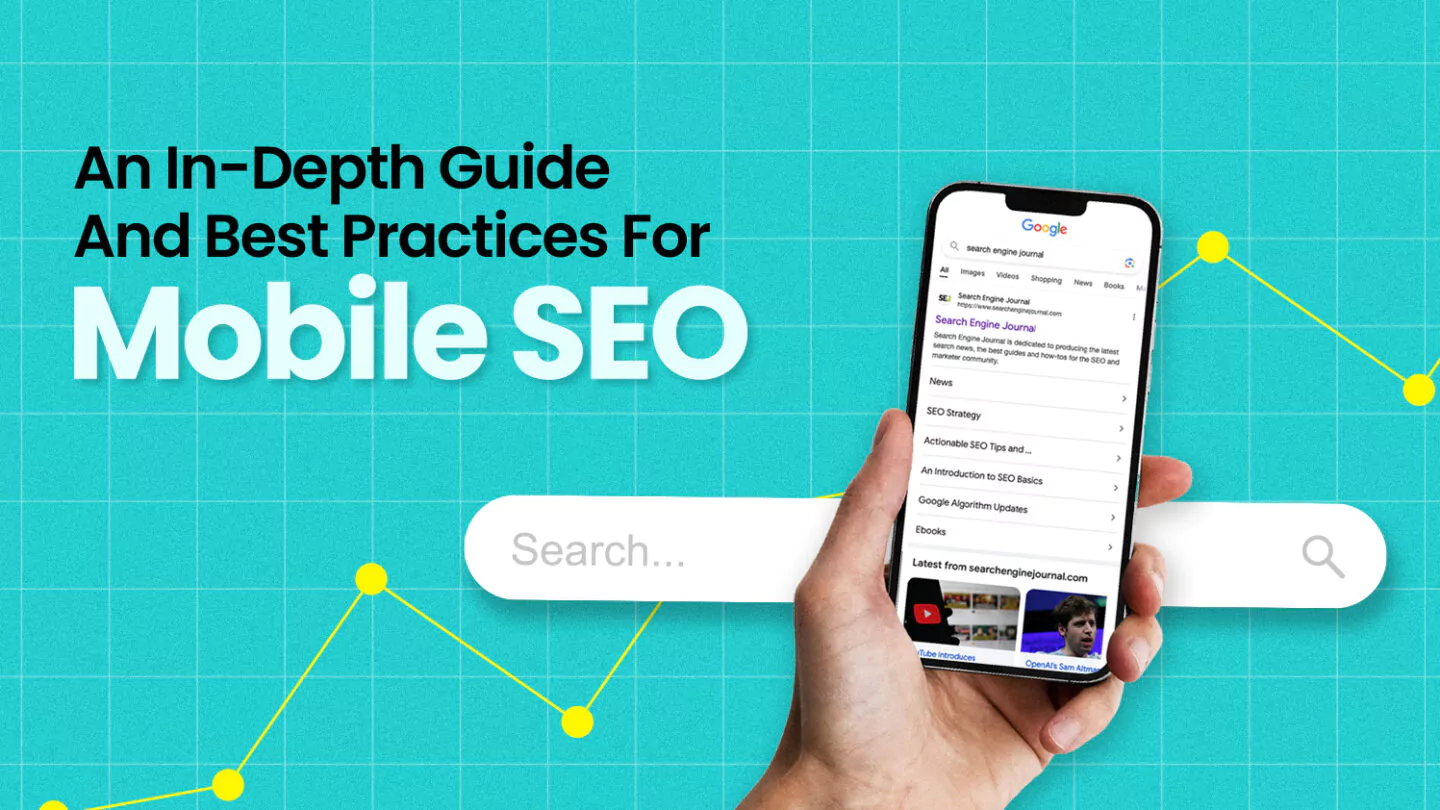Mobile optimization has turned out to be a crucial part of SEO (Search Engine Optimization). With the incredible rise in mobile internet usage, which has exceeded desktop usage, search engines like Google are emphasizing the importance of mobile-friendly websites. This shift has led to a change in how websites are ranked, and mobile optimization is no longer just a nice-to-have feature but a necessity for SEO success.
What Is Mobile Optimization?
Mobile optimization refers to the process of ensuring that your website is designed and built to provide the best possible user experience (UX) on mobile devices. This includes making sure your website is responsive (i.e., it adjusts seamlessly to various screen sizes), loads quickly, and is easy to navigate on a smaller screen.
Why Mobile Optimization Matters for SEO
- Google’s Mobile-First Indexing
Since 2018, Google has prioritized mobile-friendly websites for ranking in search results. This shift to mobile-first indexing means that Google predominantly uses the mobile version of a website’s content to rank pages and understand its relevance to search queries.
For websites that aren’t optimized for mobile, this can significantly hurt SEO rankings. If your site isn’t mobile-friendly, it can result in a higher bounce rate, lower engagement, and ultimately, a drop in your search engine rankings. Google aims to provide users with the best possible experience, and since more users are searching on mobile devices, mobile optimization is seen as an essential part of delivering that experience.
- User Experience (UX) and Engagement
Mobile optimization has a direct impact on user experience (UX). When users visit a website that isn’t mobile-friendly, they may face issues such as slow loading times, poor navigation, or content that’s hard to read on small screens. These negative experiences can lead to a higher bounce rate, meaning users leave the site quickly after visiting it.
A poor UX can be damaging for SEO because Google and other search engines take into account user behavior when determining rankings. If users are quickly abandoning your site due to poor mobile design, this signals to search engines that your site might not be providing the best possible content or experience, leading to lower rankings.
On the flip side, mobile-optimized websites offer a better experience, leading to lower bounce rates, longer time spent on site, and higher engagement. These positive signals help improve SEO performance.
- Fast Loading Times Improve SEO
Mobile optimization is not just about how your website looks but also how quickly it loads. Mobile users are often on the go and expect instant access to the information they seek. If your website takes too long to load, it can frustrate users and cause them to leave before engaging with your content.
Google has made page speed a ranking factor, meaning that websites with faster load times are likely to rank higher in search results. Mobile optimization ensures that your site loads quickly on mobile devices, providing users with a seamless browsing experience. Tools like Google PageSpeed Insights can help you test and improve your site’s speed across both desktop and mobile platforms.
- Local Search and Mobile Optimization
Mobile optimization also plays a crucial role in local SEO. Many mobile searches are location-based, with users looking for businesses or services near them. Google’s algorithms favor mobile-friendly sites in local search results, meaning that businesses with optimized mobile sites are more likely to appear in local search results.
For businesses that rely on foot traffic or local clientele, mobile optimization can directly impact visibility in search results. Ensuring that your site is optimized for mobile can help you capture local search traffic and drive more customers to your business.
- Mobile-First Indexing and Site Architecture
For websites that have separate mobile versions (i.e., m-dot sites) and desktop versions, Google now prefers the mobile version for indexing and ranking. This means that the content and structure of your mobile site must be as robust as the desktop version to rank well.
If your site relies on a mobile-specific URL (e.g., m.yoursite.com), it’s crucial that both versions of your site contain the same content, structured data, and optimized elements to ensure consistency in ranking. However, it’s generally recommended to use responsive design, which adjusts the layout based on the user’s screen size, instead of maintaining separate mobile and desktop versions.
- Mobile Optimization Enhances Content Accessibility
The design of your website and content on mobile devices should be accessible to all users, including those with disabilities. Google considers accessibility as part of the user experience, which means that accessible, mobile-optimized sites are more likely to rank better.
Ensuring your site has mobile-friendly features like text-to-speech, easy navigation, and screen readers can improve both the user experience and your SEO ranking. Mobile optimization isn’t just about appealing to the average user; it’s about making sure all visitors, regardless of their abilities, can access and interact with your content.
Tips for Optimizing Your Website for Mobile SEO
To make sure your site is mobile-friendly and ready for Google’s mobile-first indexing, here are some key tips:
- Responsive Web Design: Ensure your website adjusts seamlessly to different screen sizes. This is the most recommended mobile optimization approach.
- Optimize Images and Videos: Large media files can slow down your site, especially on mobile. Compress images and videos without compromising quality to speed up your site.
- Mobile-Friendly Navigation: Keep navigation simple and intuitive. Avoid long menus and buttons that are too small to click.
- Test Mobile Usability: Use tools like Google’s Mobile-Friendly Test to check how your site performs on mobile devices.
- Improve Loading Speed: Use caching, optimize scripts, and minimize redirects to ensure faster load times.
Conclusion
Mobile optimization is no longer an optional feature for websites. With Google’s mobile-first indexing, a poor mobile experience can severely hurt your SEO rankings. By focusing on responsive design, fast loading times, improved user experience, and ensuring accessibility, you can enhance your website’s SEO performance and cater to the growing mobile user base.
Investing time and resources into mobile optimization is a crucial step towards achieving long-term SEO success and maintaining a competitive edge in today’s mobile-driven world.

